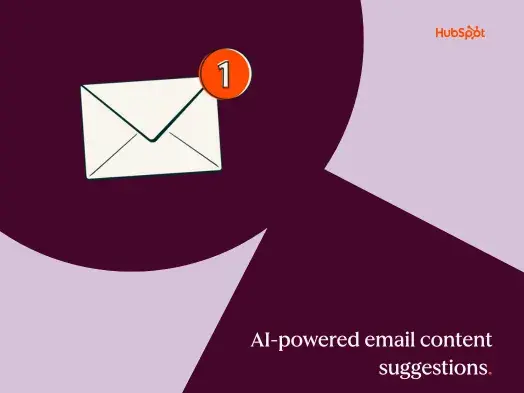There are many ways to run a business. A good majority of people would split businesses into two categories, for-profit or non-profit; however, there is one model that’s somewhere in between – social enterprises. These businesses are a balancing act between making money and making a social impact. In this article, we’ll define what exactly a social enterprise is and explore what some of its benefits and drawbacks are.
The Social Enterprise Business Model
We face countless societal issues such as poverty, sickness, and hunger, just to name a few. Social enterprises entered the business world back in the 1970s to try and help address these complex challenges. Unlike traditional nonprofits, this business model does not rely on government grants, but rather commercial revenue. And unlike traditional commercial enterprises, these businesses’ main priority is to create social change instead of maximizing profits.
To receive verification from the Social Enterprise World Forum, a business must meet 5 criteria.
- Their primary purpose must be to solve a social or environmental issue.
- That purpose must take precedence when making business decisions
- They should have a sustainable revenue model
- Any surplus revenue should be reinvested into driving forward their purpose
- Their legal and financial structures should support their long-term goals
The basic framework of the social enterprise does allow for several different types of social enterprises to exist. This means that there is always room for a new type of social enterprise to start and carve out a niche for themselves.
Examples of Social Enterprise Business Model
There are now millions of social enterprises operating around the world today. Here are some examples of social enterprises
- Toms Shoes-They were well-known for their one-for-one model where for every pair of shoes sold, another pair would be donated to a person in need.
- Bombas Socks– A sock company that operates on a similar principle to TOMS, donating a pair of socks to homeless shelters for every pair sold, as socks are among the most requested items in shelters.
- Malala Fund-Malala Fund works to ensure that girls have access to 12 years of free, safe, and quality education.
- Ecosia-This company operates as a search engine that uses the majority of its profits to plant trees.
These are just a few examples. However, there are many other types of businesses that utilize this model to make a profit as well as make a change in the world.
Benefits of the Social Enterprise Business Model
1. Self-Sustaining Financial Model
One of the main benefits of this business model is the ability to establish a reliable income stream. Nonprofits must rely on grants and donations to operate. This external funding can sometimes cause uncertainty in being able to operate long-term. Social enterprises, on the other hand, can make money by selling products or services. This reduces their dependency on external funding, but the organization is also able to secure outside funding from investors.
They then use any additional profits for the business and projects that support their mission. With this financial model, social enterprises are able to be self-sustainable and provide long-term support to their mission.
2. Positive Brand Image for Both Employees and Consumers
Because social enterprises place societal and environmental concerns before profit margins, both employees and consumers are likely to have a positive perception of the institution. For employees, working at a social enterprise provides a greater sense of purpose and fulfillment that they may not find at a traditional corporate job. Employees are likely to feel more motivated to work towards the company’s mission.
For consumers, more and more are seeking products and services that align with social good. When consumers see a business actively working to address societal or environmental issues, it not only attracts them but also builds trust and credibility with the brand. This positive perception often leads to increased customer loyalty and advocacy.
3. Supporting Societal or Environmental Change
Some of the most important work we can do as humans is to help address the challenges we face as a society. Social enterprises take the financial power of a for-profit business and use it for the good of society. They often fill the gap that government programs and non-profits are not able to operate in.
With their commitment to addressing these issues, they can create innovative solutions to global challenges and drive change. Whether it’s championing quality education, providing essentials such as food and water, or supporting employment within low-income communities, social enterprises are making a difference in other’s lives.
Drawbacks of the Social Enterprise Business Model
1. Accurately Measuring Change Impact
While social enterprises are committed to creating positive change in the world, one drawback they often face is being able to accurately measure their impact. To be transparent in their operations, social enterprises need to decide how they measure their success. Determining the metrics and data to collect can be tricky. If the methodology gets too complicated, it could be harder to communicate to future and current investors.
However, if it’s too simple, it may be skewing the actual impact of the social enterprise’s work. The metrics must also adapt as social issues may change over time. Measuring change impact can have a significant effect on the transparency to stakeholders about the effectiveness of the organization. Social enterprises should strive to continue to collect more accurate and comprehensive data.
2. Competition from Commercial Enterprises
Most social enterprises are not household names. Because large corporate businesses also operate in the for-profit industry, social enterprises do have to compete for their piece of the market. Social enterprises may sometimes have a hard time making a name for themselves and earning recognition.
They could sometimes also be misunderstood to be just a commercial enterprise if they are not effectively sharing their mission. Having a strong marketing plan should help to gain traction with consumers who are also passionate about the specific social issues the organization is addressing.
3. Higher Costs
A business using a social enterprise model might incur higher costs primarily. This is due to the dual mission of achieving social or environmental goals alongside financial profitability. These types of enterprises often prioritize ethical sourcing, sustainable manufacturing, and equitable labor practices. As a result, they’ll need to pay higher upfront investments and operational costs.
Usually, social enterprises willingly shoulder these additional costs to uphold their social commitments. That means doing things like paying fair wages, maintaining eco-friendly practices, or reinvesting profits back into the community. All of which increases the cost of operations.
Furthermore, the administrative workload can also be heavier. There is an expectation from social enterprises to make good on their social mission and to be transparent about it. However, maintaining transparency and showcasing social impact often require additional reporting and auditing.
Social entrepreneurs will need to learn how to overcome these challenges in order to sustain their businesses and accomplish their social mission.
Conclusion
Social enterprises are an innovative middle ground within the business world. They’re not just about making money, but about making a difference. They hold a unique position in the world. Like any business model, they have their fair share of challenges on the way to long-term success. However, they continue to show society there are organizations seeking to create positive impacts on communities instead of solely getting in their pockets.
Also read:
Understanding the One-For-One Business Model
10 Most Common Types of Business Models and How They Work
The Business Model for a Nonprofit Explained
Team Writer: Courtney Kovacs is a Texas based writer who enjoys writing about various topics such as entrepreneurship, travel, health and wellness, and faith.
One last step! Check your email to confirm your subscription and to get your free ebook! Thank you!
Article Tags:
business model · Business Opportunities · featured · Grow your business · Leadership · Mindset · Success
Article Categories:
Business Models · Find Your Way · Grow Your Business · Leading Your Team · Productivity · Sales











